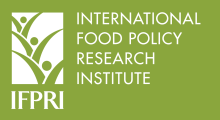Resource information
This study attempts to identify the impacts of land tenure institutions on the efficiency of farm management based on a case study of paddy rice and upland cinnamon production in the Kerinci Valley in West Sumatra, where most of Indonesia’s cinnamon is produced. The attractiveness of cinnamon as a commercial crop has implications for forest preservation. Kerinci Valley is an enclave surrounded by the Kerinci Seblat National Park, one of the largest parks in Sumatra. The highest plant biodiversity richness measured to date anywhere in the world recently was recorded in areas surrounding this park. Expansion of cinnamon area by clearing forest land therefore occurs at the expense of forest conservation.The brief concludes that, in sum, the evolution of customary tenure institutions and factor markets seems effective in achieving a financially efficient allocation of resources in the short run and accumulation of investments in agroforestry trees over time. At present, property rights in land (and trees) are well recognized and respected among community members, so that there does not seem to be much room for improving investment incentives by strengthening individual rights within these indigenous societies. However, in the long run, a land titling program may be necessary to further enhance management efficiency.


